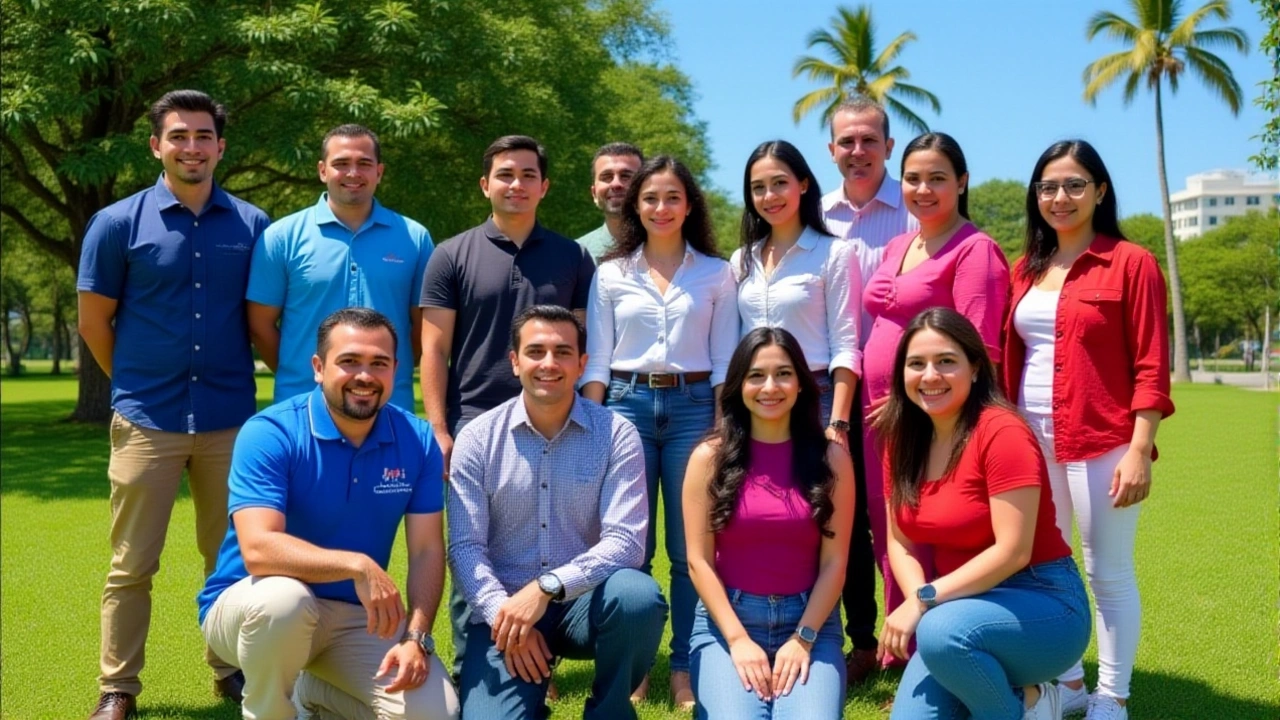On July 23, 2025, in San José, Costa Rica, the National Influenza Centers of Costa Rica and Honduras unveiled a groundbreaking collaboration to boost regional lab capacity for detecting and responding to influenza and zoonotic threats. The move comes as avian flu A(H5N1) cases continue to surface in Latin America, with only Chile and Ecuador reporting human infections through SARI surveillance. This isn’t just about flu season—it’s about preventing the next pandemic before it starts.
Building on Years of Regional Trust
The partnership isn’t starting from scratch. It’s rooted in years of technical cooperation under the Surveillance Network for Influenza and Other Respiratory Viruses (SARInet), a regional initiative that’s quietly become Latin America’s early-warning backbone for respiratory viruses. Supported by the Pan American Health Organization (PAHO) and the U.S. Centers for Disease Control and Prevention (CDC), the collaboration draws on past wins—like the August 2022 opening of Honduras’ first viral sequencing lab, where Dr. Soany Avilez and Dr. Karla Romero became the country’s first scientists trained to sequence SARS-CoV-2 after learning at Panama’s Gorgas Memorial Institute.That lab didn’t just upgrade Honduras’ tech—it transformed its role. Today, it’s positioned to become a regional hub for both bacterial and viral sequencing. Costa Rica, meanwhile, has doubled down on its commitment to the Pandemic Influenza Preparedness (PIP) Framework 2024-2025, tightening policies around sample sharing and surveillance data flow. Together, they’re not just sharing reagents or protocols—they’re building a culture of accountability.
The People Behind the Pipettes
At the heart of this effort are two women leading from the front lines. Hebleen Brenes Porras, Director of Costa Rica’s Laboratorio Nacional de Influenza in Cartago, works out of a modest facility just west of the Tres Ríos mall, where every sample processed could be the key to stopping an outbreak. Across the border, Dulce María Durón leads Honduras’ virology unit at the Laboratorio Nacional de Vigilancia de la Salud in Tegucigalpa, a lab that, until recently, lacked even basic sequencing tools.“We used to send samples to Panama or the U.S.,” Durón told colleagues at a recent meeting. “Now we can sequence them in 72 hours. That changes everything.” The shift isn’t just technical—it’s psychological. For the first time, Honduras isn’t waiting for help. It’s becoming the help.

How This Connects to the World
This isn’t just a bilateral deal. It’s part of the World Health Organization’s Global Influenza Surveillance and Response System (GISRS), which is rolling out revised National Influenza Center Terms of Reference (NIC TOR) by the end of 2025. Under the new rules, countries must share clinical specimens and virus isolates with WHO Collaborating Centres—no exceptions. Costa Rica and Honduras are already ahead of the curve.Their labs now routinely exchange H5N1 samples from humans and animals with WHO centers in Atlanta and Tokyo. That data directly informs vaccine strain selection. And it’s not theoretical: in 2024, a shared sample from a Honduran poultry worker helped identify a novel H5N1 variant months before it spread to neighboring farms. That’s the kind of lead time that saves lives.
The Bigger Picture: One Health in Action
What makes this collaboration unique isn’t just the science—it’s the scope. This is a One Health initiative, explicitly tying human, animal, and environmental surveillance. It’s funded under the PROTECT Project, led by the World Bank and PAHO, which includes intersectoral simulations for potential Highly Pathogenic Avian Influenza (HPAI) outbreaks. The Pandemic Fund backs these drills, bringing together vets, farmers, public health officers, and environmental scientists.That’s rare. Most countries still silo human health from animal health. But in Costa Rica, Honduras, Colombia, and Peru, they’re learning to think like ecosystems—not departments. “If a chicken dies in a backyard coop in Olancho,” said a PAHO regional advisor, “we need to know before a child gets sick in Tegucigalpa.”

What’s Next? Training, Tech, and Transparency
The roadmap for 2025 is clear: expand the Training of Trainers (TOT) program to reach labs in Nicaragua and El Salvador, host a hands-on regional workshop focused on wet-lab sequencing, and implement routine quality assessments across all participating labs. In October 2025, a Honduran scientist will present their sequencing protocols at the PulseNet International regional training in Lima—a major platform for public health data sharing.And here’s the quiet win: for the first time, Central American labs are sharing raw sequence data openly through a regional portal. No more delays. No more bureaucracy. Just science, in real time.
Frequently Asked Questions
How does this collaboration improve pandemic preparedness in Central America?
This partnership enables faster detection of emerging flu strains by allowing Honduras and Costa Rica to sequence viruses locally, cutting weeks off response times. Previously, samples had to be shipped abroad, delaying vaccine strain selection by up to six weeks. Now, with shared protocols and real-time data exchange under SARInet and GISRS, countries can trigger public health alerts within 72 hours of detecting a novel variant.
Why is Honduras’ sequencing capability so significant?
Before 2022, Honduras had zero capacity to sequence SARS-CoV-2 or influenza viruses. The training of Drs. Avilez and Romero changed that. Today, their lab is the only one in Central America outside Costa Rica that can perform full viral genome sequencing. This makes Honduras a critical node in the regional surveillance network, reducing dependence on foreign labs and ensuring faster, more accurate public health decisions.
What role does the WHO’s GISRS play in this collaboration?
GISRS sets the global standards for influenza surveillance and requires member countries to share virus samples and data with WHO Collaborating Centres. Costa Rica and Honduras are aligning their labs with the updated NIC TOR, which take full effect by December 2025. This ensures their data feeds directly into global vaccine decisions, giving them a seat at the table instead of being passive recipients of vaccines.
How does this effort connect to avian flu outbreaks in Latin America?
Chile and Ecuador are the only two Latin American countries to report human H5N1 cases so far. This collaboration strengthens the ability of neighboring countries to detect similar cases early through enhanced SARI surveillance and animal-human sample sharing. By linking poultry farm reports with human health data, labs can identify spillover events before they become outbreaks—critical for preventing a pandemic.
What’s the PROTECT Project, and how does it support this work?
The PROTECT Project, led by the World Bank and PAHO, funds intersectoral simulations for Highly Pathogenic Avian Influenza outbreaks across the Americas. It brings together veterinarians, farmers, and public health teams to practice coordinated responses. This collaboration is one of its flagship initiatives, proving that real preparedness requires breaking down silos between human, animal, and environmental health sectors.
Will this collaboration expand to other Central American countries?
Yes. The 2025 roadmap includes expanding the Training of Trainers program to Nicaragua, El Salvador, and Guatemala. A regional wet-lab workshop is planned for late 2025, and Honduras will share its sequencing protocols with neighboring labs. The goal is to create a self-sustaining network where each country can train others, reducing long-term reliance on external donors.
